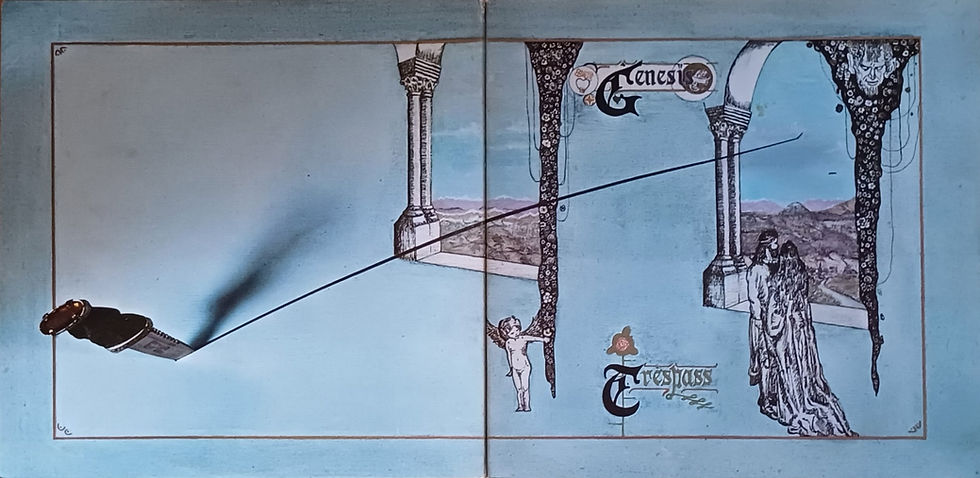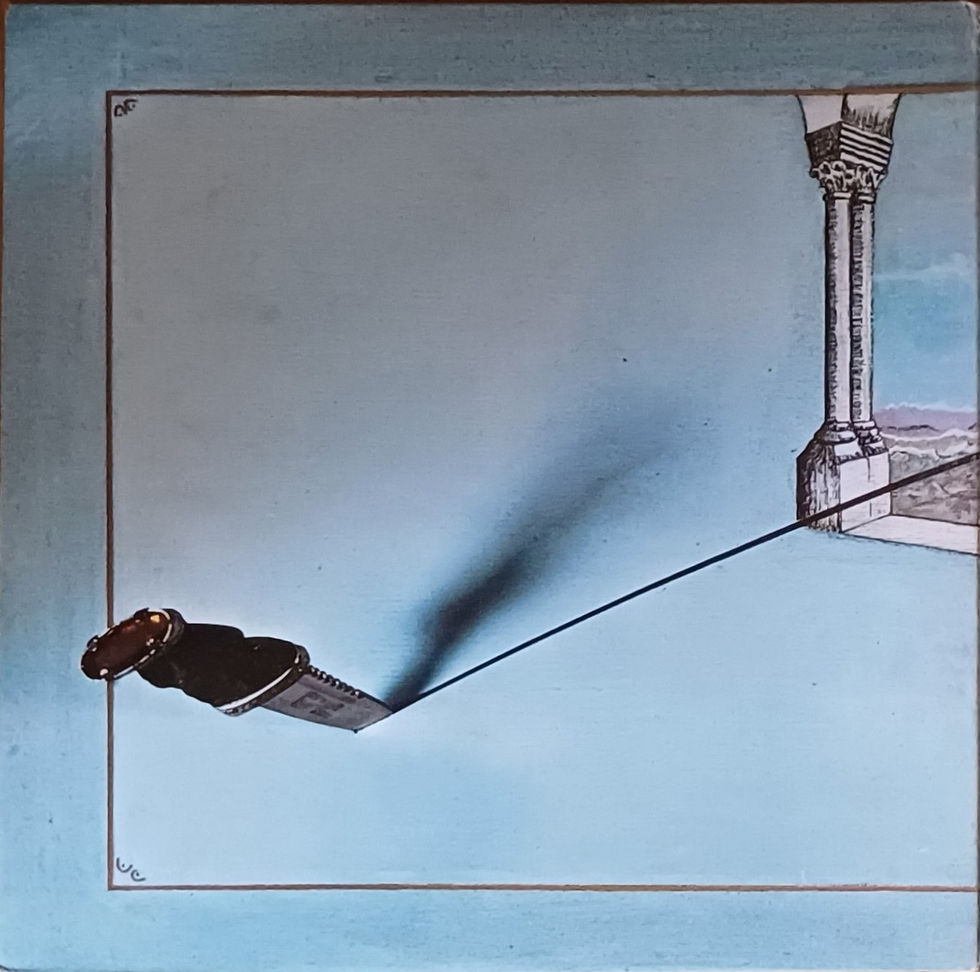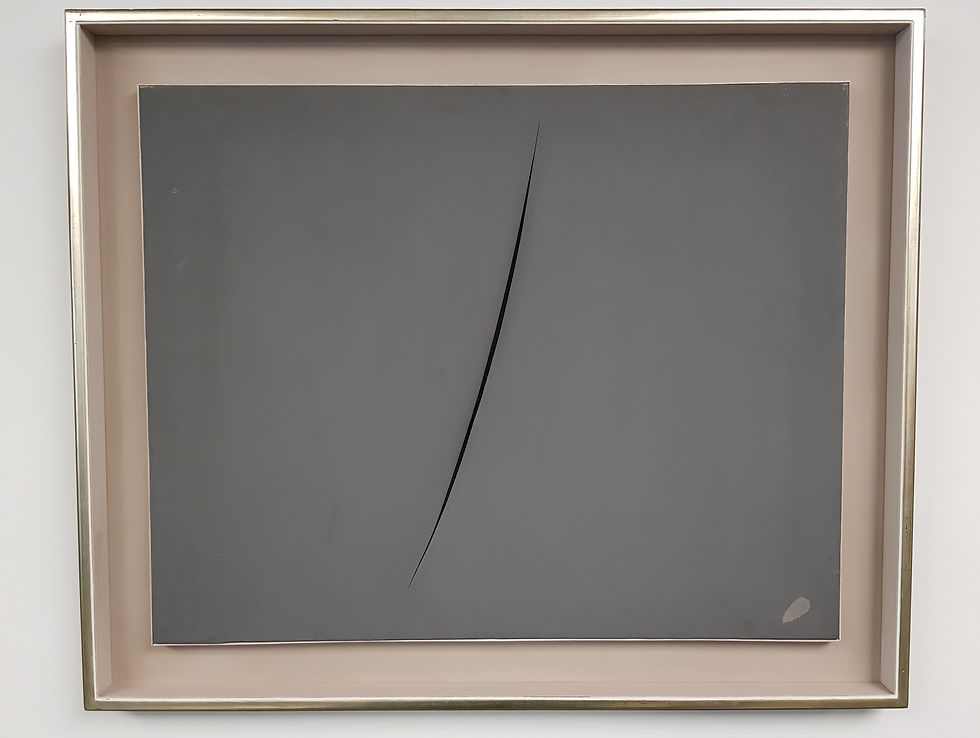Will Romano tells the tale in Mountains Come Out Of The Skies (Backbeat Books, 2010): The pastoral cover painting for Trespass was half-complete when Paul Whitehead was told that Genesis had added The Knife to the album and that his illustration would no longer work. The painting, depicting a king and queen looking out at their realm and Cupid peeking out from behind a curtain was inspired by the romantic music that made up four of the finished songs on the LP. Peter Gabriel phoned Whitehead to tell him that the previously agreed idea was no longer appropriate but appreciating the time already spent on the painting, conceded that the art could be used if Whitehead, understandably reluctant to abandon his artwork after putting a great deal of effort into the design, could find some way of making it work.
A visit to a London gallery saved the concept from the bin. 'There was an Italian artist showing his work' Whitehead told Romano. 'His thing was slashing the canvas with a razor blade.' The band agreed that slashing Whitehead's canvas with a knife was a suitable solution but didn't believe the artist would be willing to do so. The finished cover indicates just how willing he was, because he didn’t want to start the artwork again!


Romano doesn’t mention the name of the Italian artist whose works are responsible for the finished look of the Trespass cover but a on visit to the Museo del Novecento, a gallery devoted to C20 Italian art in the centre of Milan in 2019, I came across a number of pictures on display which were the obvious inspiration for the album’s artwork.

Concetto spaziale, Attesa (Spatial Concept, Waiting) is a series of works by Lucio Fontana created in Milan between 1958 and 1968. The works all consist of a canvas that has been cut either once or multiple times and are collectively known as the Tagli (cuts). Considered together, they are Fontana's most extensive and varied group of works and they have come to be seen as emblematic of his gestural aesthetic. Fontana first began puncturing the surface of paper or canvas in the late 1940s, blurring the distinction between two and three dimensions. Recognising the importance of this innovation, he continued to seek different ways of developing the hole as his signature gesture.
The first Tagli from 1958 comprised of small, often diagonal incisions, composed in groups over unprimed canvases. During 1959 these tentative slits evolved into single, more decisive slashes. Each cut was made with a single gesture using a sharp blade and the reverse of the canvas was lined with black gauze, creating an intense darkness behind the opening providing the illusion of depth or void. He experimented with both the size and shape of the Tagli and painted a number of the canvases in bright monochrome colours. The backs of the single slash canvases were inscribed with the word 'attesa', meaning 'waiting' or 'expectation' and those with multiple cuts marked with the plural form 'attese', thereby adding a temporal dimension to his 'spatial concept'.

In 1968 Fontana told an interviewer 'my discovery was the hole and that's it. I am happy to go to the grave after such a discovery'.
The photos of Lucio Fontana canvases Concetto spaziale, Attesa (1960) were taken at Museo del Novecento Milano, 6th October 2019
Comments